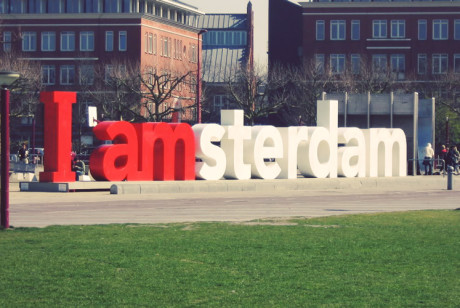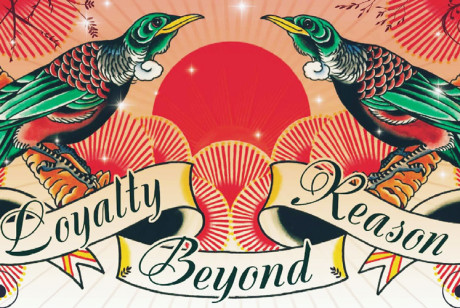Breaking Out of the Ordinary
Monday, 23 March 1998 - New York, USA

Presentation Summary
An address to the Advertising Research Foundation Conference in New York. In the attention economy, the challenge for advertisers and agencies is to develop ways of communication which cut through the background noise of a crowded media environment.
I’m delighted to have been invited to speak to a session with the title Breaking Out of the Ordinary. I’ve spent most of my life in a quest to obliterate the ordinary, demolish the dull, and bomb the bland. In advertising, the ordinary is our enemy. Our mission is to inspire and to emotionally captivate consumers with the unexpected and the extraordinary.
I want to speak to you as a person who has spent over thirty years in global marketing for great companies such as Procter & Gamble and Pepsi and only 12 months in the Agency business. I’ve been the client and now I’m the agency. My fundamental beliefs about advertising research have been strengthened by the shift.
Here they are:
- Looking for a foolproof formula for writing successful ads is about as realistic as finding the foolproof formula for living life.
- By trying to tame, we destroy.
- By trying to analyse, we lose touch.
- By refusing to trust our instincts, we lose them.
- By trying to eliminate the risk of failure, we eliminate the chance of success.
These five truths are at the core of my belief that two of the biggest mistakes we make in advertising research involve copy testing and the timing of the research. Despite what our creatives will tell you, not all research kills creativity, but quantitative copy testing certainly does. It does so by attempting to quantify the unquantifiable. It does so because quantitative copy testing always favours the familiar over the original. It does so by pretending an art is a science.
The second mistake we tend to make is to wait too long to dialogue with the consumer. Our biggest conflict internally is based on the overuse of research as a form of judgement on creative work, and its under use as a source of insight into the mind and mood of the consumer. The best advertising research never mentions advertising. It studies a consumer’s predisposition, values, needs, aspirations and behaviour as an integral part of the creative process.
Is advertising dead? If we allow ourselves to sink towards the ordinary then, yes, we are dead. Questioning what we do, and how we do it, means that we must constantly strive for the extraordinary human insights which are the essence of great advertising.
The search for new insights in a rapidly changing world means that we must constantly adjust our most basic assumptions, and not get caught up in the illusion of prediction. It means that the research needs of advertising are equally dynamic and fast moving.
Like you, I want to understand the world better, and I look in many places to form my understanding. The insights I’m after don’t come from the kind of research that limits itself to standard practices and neat numbers. It’s like the Getty theory of striking oil – “it’s no use sharpening the bit if you’re drilling in the wrong place”.
The best companies, the peak performers of business, are driven by ideas, imagination, innovation, instinct, intuition and inspiration. In advertising however, these great big “I” words are being stifled by outmoded, deductive and structurally flawed left brain research processes, that attempt to test advertising creative. It’s as if we have become like the character in the film As Good As It Gets, who laments to Jack Nicholson “I’m drowning, and here you are describing the water!”
John Banham of the Confederation of British Industry, says it another way:
“We are in danger of valuing most highly those things that we can measure most accurately. As a result we are in danger of being exactly wrong, rather than approximately right.”
Current research is busy reducing the world of possibilities into a narrow band of observations. We must be prepared to let go of old dogmas. In advertising we must ask whether this means slaughtering sacred cows like the single minded or unique selling proposition. In advertising research we must question the relevance of hard-held beliefs like quantitative copy testing that simply hands down a pass or fail score. This type of observation causes us to lose more information than we gain.
Perhaps the advertising research industry should adopt General Colin Powell’s P=40 to 70 formula, in which P stands for probability and the numbers indicate the percentage of information acquired. Once the information is in the 40 to 70 range, the General says, go with your gut. This is the crux of the tension between agencies, clients and researchers.
We need research which accepts the great big “I” words, and doesn’t concentrate entirely on the fact that we – in actual fact, our clients – are taking a risk. We need research which tells us not what people say, but what they actually do. We need to find low cost, fast mechanisms to actually research behaviour, not intent. We need to be able to research the consumer of one, for in a market which is segmenting so fast we need a pin prick approach, not a shotgun. And we need research which tells us not what the herd thinks and says they want, but tells us who the leaders are, and what they are going to do next. As Hugh Mackay, one of Australia’s most renowned researchers said, “when it comes to advertising, research should be used as a launching pad and not a safety net.”
These are the challenges which are shaking the floorboards of our industries. The sheer speed and the enormous breadth of change in today’s world makes a shift inevitable. Change in the past thirty years has fundamentally altered the way we understand the world.
In the place of Newtonian physics, cartesian logic and classical economics, have risen new tools for understanding our world like quantum physics, chaos theory, fuzzy logic, biological models of organisations and theories of the network economy. New ways of thinking will be the only way to shape the future and to make sense of a far more complex world.
Responding to change fifteen years ago, Saatchi & Saatchi created anthropological tools that brought observational and interviewing skills to the study of consumer culture. The Anthropological Search is a primary tool we use to understand consumer beliefs and values, and to identify culturally relevant ways to establish brand differentiation. We have also been pioneers in the use of psychological probing to understand the consumer’s emotional motivations, and how to create communications that are anchored in the deeper level of the consumer’s psyche.
A place our research drill will be looking next is the human brain. Our knowledge of the brain sciences – neurology, cognition and psychology – has blossomed alongside information technology. Research in these fields is beginning to give us amazing insights into how we think and process information, and this creates enormous possibilities for our industries.
A pioneer neurologist Antonio Damasio from the University of Iowa, says “the study of the brain is the last frontier of science”. It’s from explorations along this frontier that we will find the great new insights which bring us into the future of communications. Consider the insights we have already gained. We’ve learnt that the brain is great at what’s called mushy processing. We are experts at approximates and extrapolation, at pattern recognition, and we have a high tolerance for ambiguity. This was what was happening in our brains when we were laughing at those ads which we watched before. We were extrapolating and playing off the ambiguities in a spontaneous mental fusion which we registered as – funny. It’s no wonder that Edward De Bono has described humour as “the most complex of human thought patterns.”
We have also gained insights into our ability to process vast amounts of information from the physical world. The human eye can discriminate 7.5 million colours and we know that we have untapped information processing abilities. The average fast speaker utters about 150 words per minute, but the human brain has the capacity to process four times as many.
Neurology is producing some of the most exciting insights which have the potential to smash a fundamental assumption of both our industries – that humans are rational. A recent study by Damasio of patients who have lost their secondary emotions, reveals a model of the thought process dominated by emotions. The patients were able to think normally on a hypothetical level, but without the input of their emotions, they were unable to make even the most basic decisions which involved concrete actions. This suggests that there are emotional drivers behind even the most basic practical decision we make. Our hypothetical reasoning doesn’t factor in emotional drivers, and does not reliably predict how we will actually behave.
In an environment of enormous information availability, humans must become increasingly selective of the information we process. And it’s true that the process of selection is based on deep seated emotional motivations, which are often invisible to the rational mind. The danger we face in this environment is information overload. Consider our media choices today compared with thirty years ago. In addition to newspapers, network TV, radio and magazines we now have cable TV, video, CD roms and all the possibilities offered on the Internet – from push to chat rooms to streaming video. What value can messages about one brand have above another if neither are discernible above the foreground clatter?
The distinct risk to advertising, in fact all communication in the attention economy, is a crisis point of too many attention options. Advertising could be perceived by consumers as part of the problem, not a solution. Picking up the volume will only be a temporary fix. It is the fast and easy track to take. The challenge for both advertising and research agencies, is to be at the simplicity and clarity end, the understanding end, the ideas end, not at the volume end.
Indeed, we need research that helps us unlock the potential processing power of our brains. The challenge has been put squarely by Alan Kay, the modern genius who thought of the idea of the personal computer. To avoid “roadkill on the Infobahn”, he says, we do not need more education, nor more information. “First and foremost”, says Alan Kay, “we need a better sense of how to transcend the psychological and social limitations of being human.”
How do I finish after a challenge like that? With a note of reassuring wisdom. Many of you will have seen Good Will Hunting, a film about doubt, choices, identity, personal growth and breakthrough thinking. And the moral of the story?
“Trust in yourself, have courage, remember your gift, and most of all, follow the girl.”









